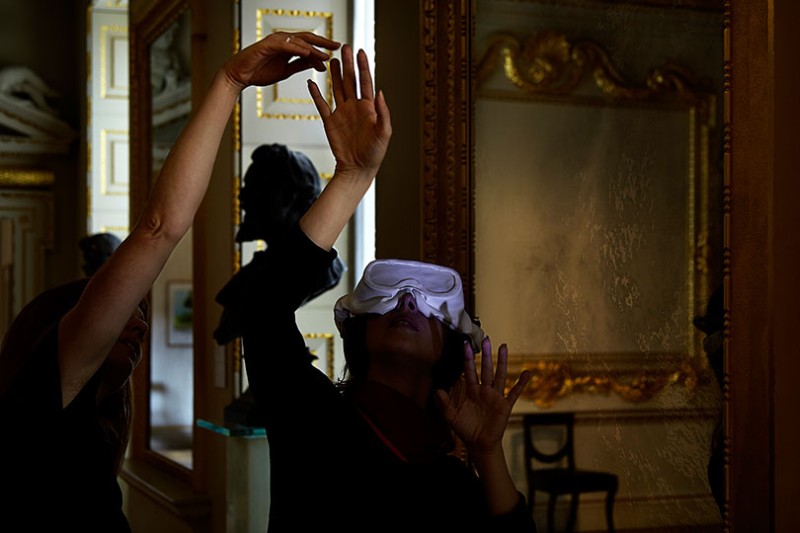 Lundahl & Seitl’s Symphony of a Missing Room leads us into an environment where the individual is cherished. It is our own perception of our world around us that makes this work beautifully unique. In stark contrast to some larger-scale site-based immersive works, here there is a care, subtlety, and attention to each audience member unlike anything I have experienced.
Lundahl & Seitl’s Symphony of a Missing Room leads us into an environment where the individual is cherished. It is our own perception of our world around us that makes this work beautifully unique. In stark contrast to some larger-scale site-based immersive works, here there is a care, subtlety, and attention to each audience member unlike anything I have experienced.
Set in the Royal Academy in London, a small audience group meet at the foyer for a tour of the currently closed gallery. Once inside we are left to wait; here the space is being prepped for the upcoming Summer Exhibition, an annual art event that is quite simply the world’s largest open-submission art show: a curatorial delight of the known and unknown. We are greeted by an elderly tour guide, played with grace by the enigmatically beautiful Colin McLean, a figure who bookends the production with a gentle simplicity. The world around us, typically hidden from public view, is a space filled with works to be curated into situ, divided by bustling groups of corporate suits congratulating one another, patrons, and solitary art handlers and documenters. It is these solitary figures that capture the eye; they are the forgotten force behind the world that others celebrate, but like them so too this exhibition offers an incongruous blend of success and the eternally forgotten. As indeed are we; our guide blending us further into the background we seemingly become ever more invisible to those around us.
Having been given noise-cancelling headphones, the sounds of the outside world are replaced by a new soundscape that develops from the vacuous space of echoing footsteps towards a score of ultimate magic and wonder. Here, through a series of incorporated stimuli relating to relaxation and establishing convention, a sense of developing immersion is created through the accompanying narration. It doesn’t feel shocking then, when we are asked to close our eyes, and goggles are placed on our heads removing our sight. From here on in the world is dictated purely through our other senses. We can no longer see, yet we now can truly perceive so much more. We are forgotten figures in a forgotten space; explorers of our own unique world.
The soundscape and its timing to the experience are exquisitely designed, but the real triumph of the work is the choreography. Not only in moving through spaces and hitting our cues from a technical standpoint but in the reciprocal dance that you participate in. Through the lightest of touches, the finger tips of unknown figures guide you onwards and with ever increasing trust, one finds oneself dancing with this unknown form through the private and public spaces of the Academy. The care and attention given to establishing the freedom here, while very simplistic and potentially familiar to students of drama or dance, is wondrous. To build this layer of trust and create this sense of freedom, and at times speed, is a gift. In this symphony our minds perceive all, and our imagination runs free to curate our own hidden gallery, lost inside one of the world’s most famous; never to be seen or touched again. This is true immersion, our participation is valued and this experience will live on long after leaving the missing rooms of the Royal Academy.
